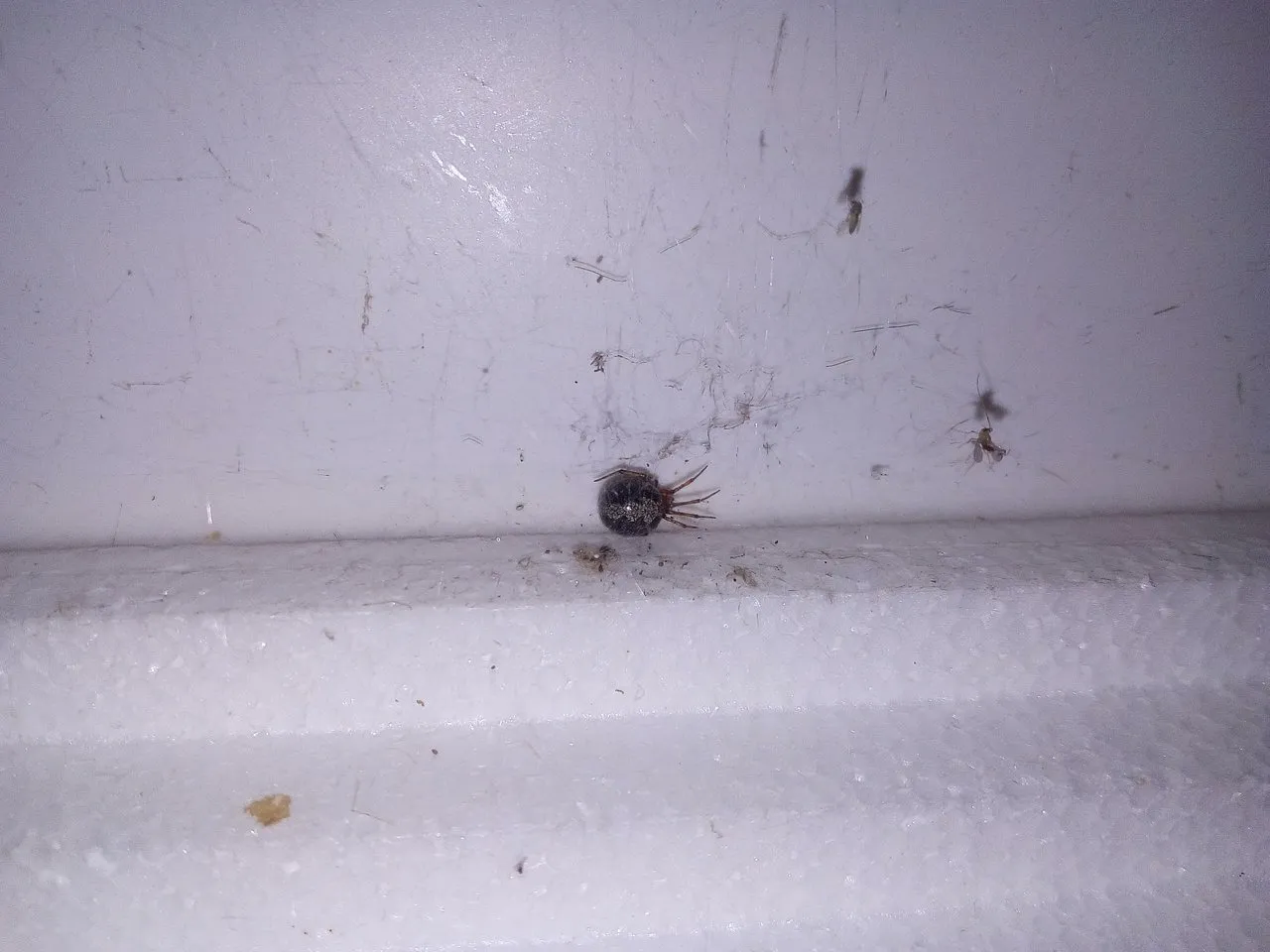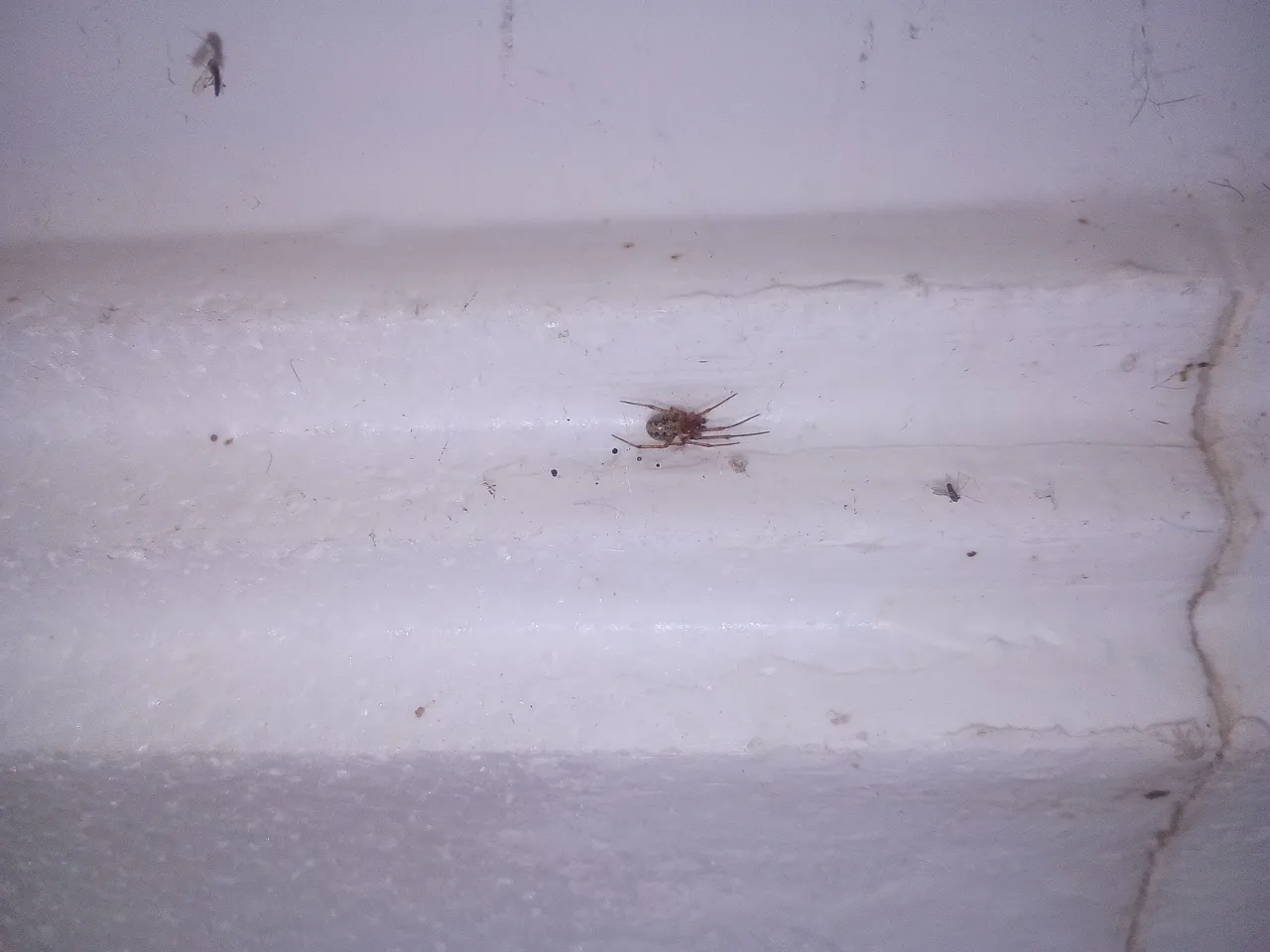Taxon:
- Class: Arachnida
- Order: Araneae
- Infra-Order: Araneamorph (true spiders)
- Family: Theridiidae
- Genus: Theridion
- Species: Unknown, likely T. purcelli
Female
About 5mm in body length. Leg span of approximately 10mm diagonally.
Cephalothorax:
Reddish carapace with a dark line down centre and dark outline near edges.
Abdomen:
Round dark grey and mottled abdomen with a light grey mottled chevron-like pattern down centre from anterior to posterior.
Legs:
Reddish legs with dark bands at the joints. First pair longest, 4th pair second longest. 3rd pair shortest.
Male
As in female, but the colours are more dull with a brownish tint. Leg pairs ordered in length as 1, 2, 4, 3. Large near-black, bulbous pedipalp tarsi. Abdomen not as bulbous as female.
ABOUT THE GENUS
Theridion like to use surrounding debris, including the carcasses of their prey, to build their retreats with. As grotesque as that sounds, it’s effective in helping to keep predators away and hiding from them during the day when they sleep 1.
As is typical of Theridiids, Theridion creates a tange-web, albeit very small and the silk very thin, making it difficult to see. Theridion are also harmless to humans. Their venom is medically insignificant and they are too small to pierce our skin with their fangs. So they’re safe to keep around the house.
As their common name “false house button spider” suggests, Theridion are often found in people’s houses. And unlike button spiders, Theridion’s webs are small and barely noticeable. Also unlike their cousin, their webs tend to be messy. Not only because of the carcasses, but also because it traps and collects dust so easily.
While a few Theridiid genera look similar, Theridion spiders are iconic for tending to have that chevron-like pattern down a round bulbous abdomen. It makes them easy to identify to genus, at least. But not all Theridion sp. have this patterning.


